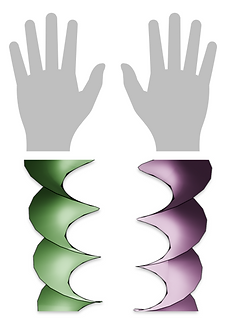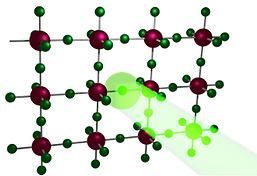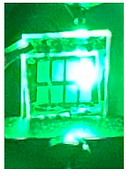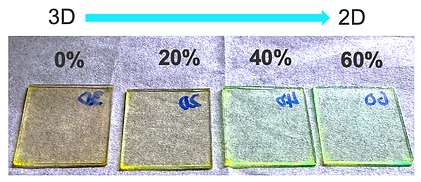

Dr. Wanyi Nie

Research
Current Research Projects
Semiconductors for high energy photon sensing

Radiation detectors are essential technologies in medical imaging, security screening, crystallography, and other non-destructive diagnostic applications. However, there remains a critical need for a low-cost, high-performance semiconductor capable of efficiently converting high-energy photons into electrical signals.
Our research focuses on developing novel semiconductor materials that can detect and capture radiation photons and radioactive substances, and effectively deliver charge signals. These innovations aim to advance the next generation of radiation sensing technologies.
Chiral semiconductors for spintronics


Nature elegantly employs chiral molecules—those with broken mirror symmetry—to guide the selective and highly accurate synthesis of proteins.
Inspired by this principle, we are developing chiral semiconductors with broken mirror symmetry to selectively detect particles such as photons and electrons based on their angular momentum.
Our research aims to understand the mechanisms behind chirality-induced selectivity in these materials and to integrate them into advanced optoelectronic devices.
Photonic sources for lighting devices



Two-dimensional halide perovskites are solution-grown quantum wells that exhibit near-unity photoluminescence quantum yield. However, their bright phase is thermodynamically unstable. Our research investigates the mechanisms behind this phase instability and explores strategies to stabilize the material for practical applications.
In parallel, we are exploring the dynamic nature of the perovskite lattice. Upon external stimulation, we observe a photoemission response that is self-healing once the stimulus is removed. We refer to this behavior as a “reconfigurable material,” which holds promise for use in photonic memory and adaptive optoelectronic systems.
Semiconductors for space


We are exploring semiconductors that can operate reliably in harsh environments—space being a prime example.
Our key scientific questions include:
-
How do material properties—optical, electronic, and spin polarization—respond under extreme conditions?
-
What structural features govern these properties during operation in space?
Funding
We gratefully acknowledge the following sponsors for their support:



